-
 Bitcoin
Bitcoin $107,810.8710
-1.45% -
 Ethereum
Ethereum $2,531.4386
-1.75% -
 Tether USDt
Tether USDt $1.0000
-0.03% -
 XRP
XRP $2.2542
-0.99% -
 BNB
BNB $659.1350
-0.50% -
 Solana
Solana $148.5456
-2.40% -
 USDC
USDC $0.9999
-0.02% -
 TRON
TRON $0.2868
-0.44% -
 Dogecoin
Dogecoin $0.1666
-3.65% -
 Cardano
Cardano $0.5751
-2.36% -
 Hyperliquid
Hyperliquid $37.6845
-5.51% -
 Bitcoin Cash
Bitcoin Cash $494.9448
-0.65% -
 Sui
Sui $2.8396
-3.31% -
 Chainlink
Chainlink $13.2423
-2.59% -
 UNUS SED LEO
UNUS SED LEO $9.0482
0.02% -
 Stellar
Stellar $0.2467
-2.44% -
 Avalanche
Avalanche $17.8165
-3.63% -
 Shiba Inu
Shiba Inu $0.0...01158
-2.41% -
 Toncoin
Toncoin $2.7397
-3.42% -
 Hedera
Hedera $0.1560
-2.73% -
 Litecoin
Litecoin $85.8559
-2.34% -
 Monero
Monero $315.3710
-2.30% -
 Dai
Dai $1.0001
0.00% -
 Polkadot
Polkadot $3.3443
-2.03% -
 Ethena USDe
Ethena USDe $1.0001
0.01% -
 Bitget Token
Bitget Token $4.2888
-3.73% -
 Uniswap
Uniswap $7.3388
-1.57% -
 Aave
Aave $278.2986
-3.05% -
 Pepe
Pepe $0.0...09807
-3.67% -
 Pi
Pi $0.4563
-2.39%
Can LTC buy the bottom after three consecutive negative weekly lines?
Litecoin's potential to buy the bottom after three negative weekly lines depends on technical indicators, historical patterns, and market sentiment; careful analysis is crucial.
Apr 22, 2025 at 04:36 pm
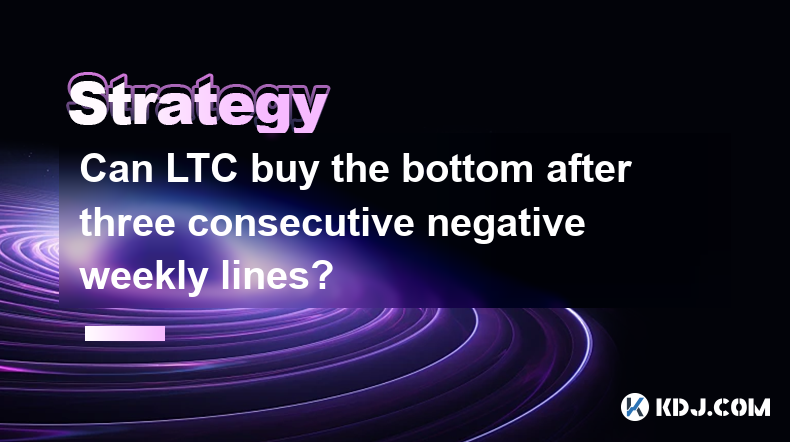
The question of whether Litecoin (LTC) can buy the bottom after three consecutive negative weekly lines is a nuanced one, often influenced by various market factors, technical analysis, and sentiment within the cryptocurrency community. To delve into this, we need to consider the technical indicators, historical patterns, and the broader market context.
Understanding Three Consecutive Negative Weekly Lines
Three consecutive negative weekly lines indicate a sustained downward trend in the price of Litecoin over three weeks. This pattern can signal a bearish sentiment among traders and investors. However, it's crucial to understand that this alone does not necessarily mean that the bottom has been reached or that a reversal is imminent.
Technical Analysis and Indicators
When analyzing whether LTC can buy the bottom after such a pattern, technical indicators play a significant role. Some of the key indicators to consider include:
- Moving Averages: The 50-day and 200-day moving averages can help identify potential support levels. If LTC's price approaches or falls below these averages after three negative weekly lines, it might indicate a buying opportunity.
- Relative Strength Index (RSI): An RSI below 30 suggests that LTC is oversold and could be due for a rebound. Conversely, an RSI above 70 indicates overbought conditions.
- MACD (Moving Average Convergence Divergence): A bullish crossover in the MACD after a period of negative weekly lines could signal a potential reversal.
Historical Patterns and Precedents
Looking at historical data, there have been instances where Litecoin has rebounded after three consecutive negative weekly lines. Analyzing past performance can provide insights into potential future movements, though past performance is not a guaranteed predictor of future results.
- For example, in early 2020, Litecoin experienced a similar pattern, followed by a significant recovery. This suggests that such a pattern can indeed lead to a buying opportunity, but it requires careful monitoring of other market indicators.
Market Sentiment and External Factors
Market sentiment is another crucial factor to consider. If the broader cryptocurrency market is experiencing a downturn, it might be more challenging for LTC to recover quickly. Conversely, positive news or developments within the Litecoin ecosystem could catalyze a rebound.
- News and developments: Announcements related to Litecoin, such as upgrades or partnerships, can influence investor sentiment and drive price movements.
- Broader market trends: The performance of major cryptocurrencies like Bitcoin often influences altcoins like Litecoin. A recovery in Bitcoin could signal a potential recovery in LTC.
Risk Management and Strategy
When considering whether to buy the bottom after three consecutive negative weekly lines, risk management is essential. Here are some strategies to consider:
- Diversification: Spreading investments across different assets can mitigate risk.
- Setting stop-loss orders: This can help limit potential losses if the price continues to fall.
- Dollar-cost averaging: Investing a fixed amount at regular intervals can reduce the impact of volatility.
Practical Steps for Buying the Bottom
If you decide to buy Litecoin after three consecutive negative weekly lines, here are some practical steps to follow:
- Research and analysis: Before making any investment, thoroughly analyze the current market conditions and technical indicators.
- Choose a reputable exchange: Ensure you use a reliable cryptocurrency exchange that supports Litecoin.
- Fund your account: Transfer funds to your exchange account, ensuring you only invest what you can afford to lose.
- Place your order: Decide whether to place a market order or a limit order, depending on your strategy and risk tolerance.
- Monitor and adjust: Keep a close eye on market movements and be prepared to adjust your strategy as needed.
Frequently Asked Questions
Q: How long should I wait after three consecutive negative weekly lines before considering a purchase?
A: The timing can vary, but it's generally advisable to wait for additional confirmation from technical indicators. For instance, waiting for a bullish crossover in the MACD or an RSI moving out of oversold territory can provide more confidence in a potential reversal.
Q: Are there specific price levels to watch for when buying the bottom of Litecoin?
A: Yes, key support levels such as previous lows, moving averages, and psychological price points (e.g., round numbers) can serve as potential buying levels. Monitoring these levels can help identify optimal entry points.
Q: Can external events like regulatory news impact Litecoin's recovery after three negative weekly lines?
A: Absolutely, regulatory news can significantly influence cryptocurrency prices. Positive regulatory developments can boost investor confidence, while negative news can exacerbate a downturn. It's essential to stay informed about such events when considering investments.
Q: How important is volume when assessing whether Litecoin can buy the bottom?
A: Volume is a critical factor. An increase in trading volume during a potential reversal can indicate strong buying interest and validate a bottoming pattern. Conversely, low volume during a recovery attempt might suggest a lack of conviction among investors.
Disclaimer:info@kdj.com
The information provided is not trading advice. kdj.com does not assume any responsibility for any investments made based on the information provided in this article. Cryptocurrencies are highly volatile and it is highly recommended that you invest with caution after thorough research!
If you believe that the content used on this website infringes your copyright, please contact us immediately (info@kdj.com) and we will delete it promptly.
- Pump.fun's PUMP Token and Gate.io: A $4 Billion Meme Coin Gamble?
- 2025-07-08 16:30:12
- DigitalX, BTC Holdings, Funding Secured: Aussie Crypto Firm Goes Big on Bitcoin
- 2025-07-08 17:10:12
- Acquire.Fi: Navigating the Web3 M&A Landscape as a Consultant
- 2025-07-08 16:30:12
- Bitcoin ETFs, Inflows, and Selling Pressure: A Tug-of-War in the Crypto Market
- 2025-07-08 17:50:12
- Chainlink (LINK) Price Analysis: Navigating Uncertainty with Analysts' Insights
- 2025-07-08 16:50:12
- Murano, Bitcoin, and Treasury Strategy: A New Era for Real Estate?
- 2025-07-08 17:50:12
Related knowledge
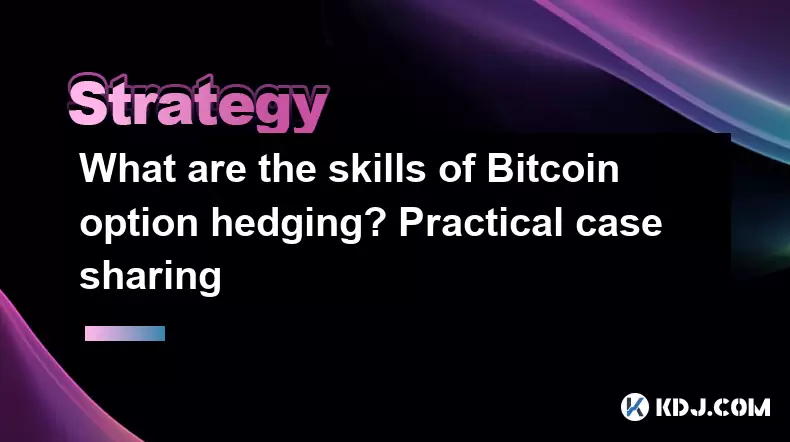
What are the skills of Bitcoin option hedging? Practical case sharing
Jun 24,2025 at 04:01pm
Understanding Bitcoin Option HedgingBitcoin option hedging is a risk management strategy used by traders and investors to protect their positions in the volatile cryptocurrency market. By using options, individuals can limit potential losses while retaining the opportunity for profit. In essence, it allows one to insulate against adverse price movements...
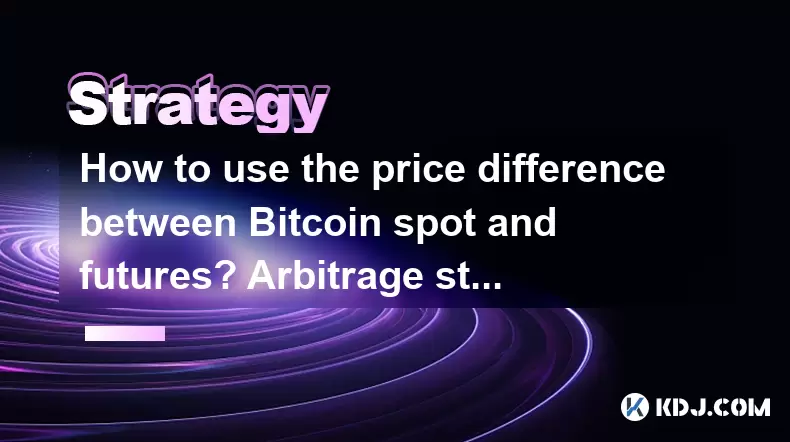
How to use the price difference between Bitcoin spot and futures? Arbitrage strategy
Jun 20,2025 at 02:56pm
Understanding Bitcoin Spot and Futures MarketsTo effectively leverage arbitrage opportunities between Bitcoin spot and futures markets, it's essential to understand the fundamental differences between these two types of markets. The spot market refers to the direct buying and selling of Bitcoin for immediate delivery at the current market price. In cont...

How to increase DeFi lending income? Strategy and risk analysis
Jun 24,2025 at 02:08pm
Understanding DeFi Lending and Its Income PotentialDeFi (Decentralized Finance) lending has emerged as a popular way to earn passive income in the cryptocurrency space. Unlike traditional banking systems, DeFi lending platforms allow users to lend their crypto assets directly to borrowers without intermediaries. The lenders earn interest based on the su...
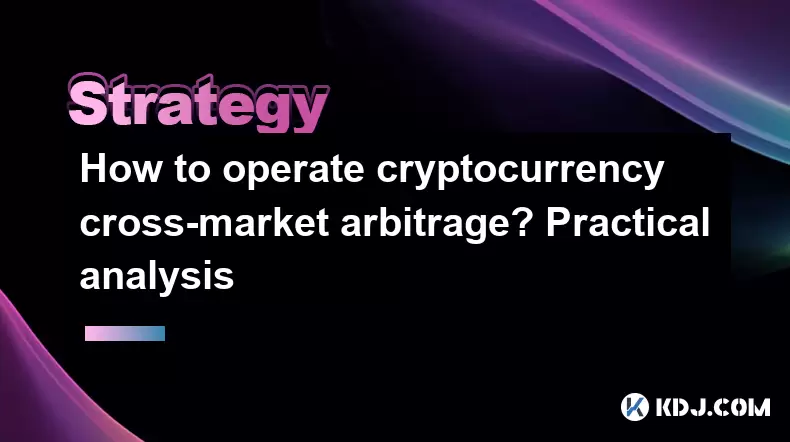
How to operate cryptocurrency cross-market arbitrage? Practical analysis
Jun 23,2025 at 04:01am
Understanding Cryptocurrency Cross-Market ArbitrageCryptocurrency cross-market arbitrage involves taking advantage of price differences for the same digital asset across different exchanges. The core idea is to buy low on one exchange and sell high on another, capturing the profit from the discrepancy. This strategy relies heavily on real-time market da...

How to make profits from high-frequency cryptocurrency trading? Sharing core skills
Jun 19,2025 at 05:07pm
Understanding High-Frequency Cryptocurrency TradingHigh-frequency trading (HFT) in the cryptocurrency market involves executing a large number of trades at extremely fast speeds, often within milliseconds. This method relies on small price discrepancies across exchanges or within a single exchange’s order book. Traders use complex algorithms and ultra-l...
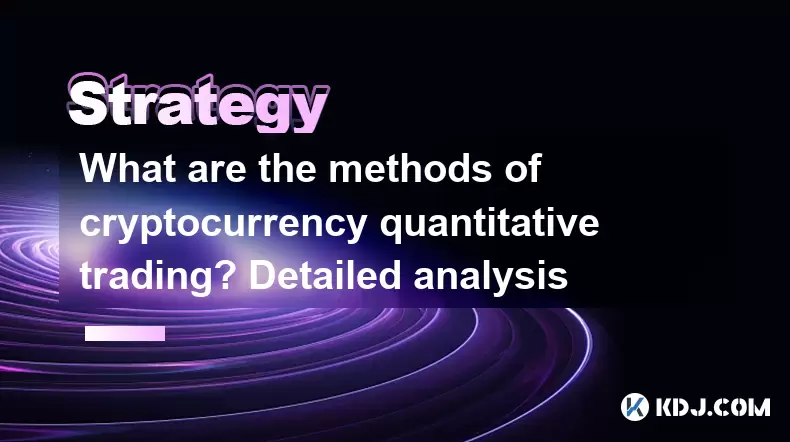
What are the methods of cryptocurrency quantitative trading? Detailed analysis
Jun 22,2025 at 11:07pm
Understanding the Core of Cryptocurrency Quantitative TradingCryptocurrency quantitative trading refers to the use of mathematical models and algorithms to execute trades in the digital asset market. Unlike traditional discretionary trading, which relies heavily on human judgment, quantitative trading leverages data-driven strategies to identify profita...

What are the skills of Bitcoin option hedging? Practical case sharing
Jun 24,2025 at 04:01pm
Understanding Bitcoin Option HedgingBitcoin option hedging is a risk management strategy used by traders and investors to protect their positions in the volatile cryptocurrency market. By using options, individuals can limit potential losses while retaining the opportunity for profit. In essence, it allows one to insulate against adverse price movements...

How to use the price difference between Bitcoin spot and futures? Arbitrage strategy
Jun 20,2025 at 02:56pm
Understanding Bitcoin Spot and Futures MarketsTo effectively leverage arbitrage opportunities between Bitcoin spot and futures markets, it's essential to understand the fundamental differences between these two types of markets. The spot market refers to the direct buying and selling of Bitcoin for immediate delivery at the current market price. In cont...

How to increase DeFi lending income? Strategy and risk analysis
Jun 24,2025 at 02:08pm
Understanding DeFi Lending and Its Income PotentialDeFi (Decentralized Finance) lending has emerged as a popular way to earn passive income in the cryptocurrency space. Unlike traditional banking systems, DeFi lending platforms allow users to lend their crypto assets directly to borrowers without intermediaries. The lenders earn interest based on the su...

How to operate cryptocurrency cross-market arbitrage? Practical analysis
Jun 23,2025 at 04:01am
Understanding Cryptocurrency Cross-Market ArbitrageCryptocurrency cross-market arbitrage involves taking advantage of price differences for the same digital asset across different exchanges. The core idea is to buy low on one exchange and sell high on another, capturing the profit from the discrepancy. This strategy relies heavily on real-time market da...

How to make profits from high-frequency cryptocurrency trading? Sharing core skills
Jun 19,2025 at 05:07pm
Understanding High-Frequency Cryptocurrency TradingHigh-frequency trading (HFT) in the cryptocurrency market involves executing a large number of trades at extremely fast speeds, often within milliseconds. This method relies on small price discrepancies across exchanges or within a single exchange’s order book. Traders use complex algorithms and ultra-l...

What are the methods of cryptocurrency quantitative trading? Detailed analysis
Jun 22,2025 at 11:07pm
Understanding the Core of Cryptocurrency Quantitative TradingCryptocurrency quantitative trading refers to the use of mathematical models and algorithms to execute trades in the digital asset market. Unlike traditional discretionary trading, which relies heavily on human judgment, quantitative trading leverages data-driven strategies to identify profita...
See all articles

























































































